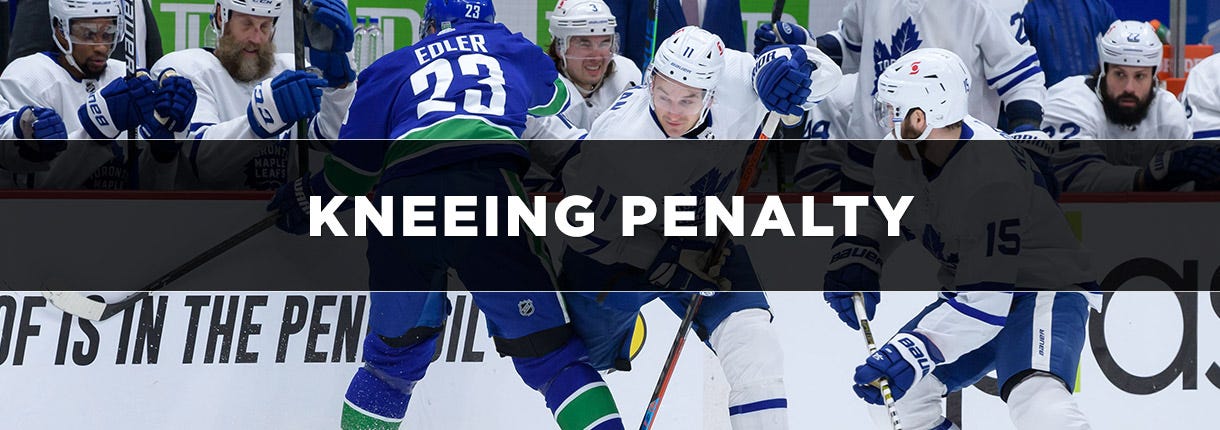Hockey Penalties Explained: Kneeing Penalty

Hockey is a fast and dangerous sport and one of the most dangerous aspects of the game is knee-on-knee contact. While sometimes this is incidental, one of the most polarizing penalties in the game is kneeing.
In this article, we’ll cover:
Wondering about the other penalties in the game of hockey? Check out our other articles in the Hockey Penalties Explained series.
What is Kneeing in Hockey?
A kneeing penalty is a highly controversial hit where the knee is the main point of contact during an attempted hit. This can happen when a player deliberately targets the opposing player's knee with their own knee or when a player accidentally extends their own knee out to contact the knee of the other player.
The knee-on-knee contact is a result of one player going for a hit on the puck carrier, but they can mistime or miscalculate their body position and try to stick their leg out to slow down the puck carrier. While this is never encouraged as a regular hit in the sport, it happens often.
These knee-on-knee hits tend to look extremely dangerous and usually end with some sort of injury or fights on the ice. There have been a lot of careers ended and penalty minutes accumulated when these hits happen during gameplay. Beyond that, there happen to be some “repeat offenders” of this penalty. Look at the header image and the person in the video below; notice anything?
What is the Penalty for Kneeing?
The penalty for kneeing in hockey is tiered. Depending on the severity of the hit, it can escalate from a 2-minute minor penalty all the way through to a game misconduct and disciplinary review by the league. If the contact is less-severe, the player would be given a 2-minute minor penalty and it can be doubled to a 4-minute double minor as well.
Next, the player could be given a 5-minute major penalty depending on the severity. Within the referee’s discretion, a game misconduct can be added in which the offending player would be ejected from the game.
Beyond all of this, certain leagues have their own supplemental discipline in which the play can be reviewed after the game and the player can be suspended or fined if the incident is that severe.
FAQs About Hockey Kneeing Penalty
When was the kneeing penalty introduced?
For nearly 20 years, the kneeing penalty has been around and enforced in major hockey leagues. Even before that, there were major hits in the NHL classified as “tripping” which influenced the delineation for a kneeing penalty.
Why was the kneeing penalty introduced?
Kneeing was introduced when tripping penalty calls did not yield enough punishment to the offending player. Tripping was not subject to more disciplinary action or major penalties, therefore knee-on-knee contact was introduced as a knee subset of penalties. This was first adopted in the NHL and subsequent leagues followed.
Shop Our Selection of Hockey Pads & Protection at HockeyMonkey
Hockey is an active sport where every player is looking for a competitive advantage. Beyond that, hockey should be played with respect, and we must respect our opponents. Trying to take out an opponent with knee-on-knee contact will land you in the penalty box or even suspended! Keep your head up and shop our full line of protective gear on HockeyMonkey.com!











